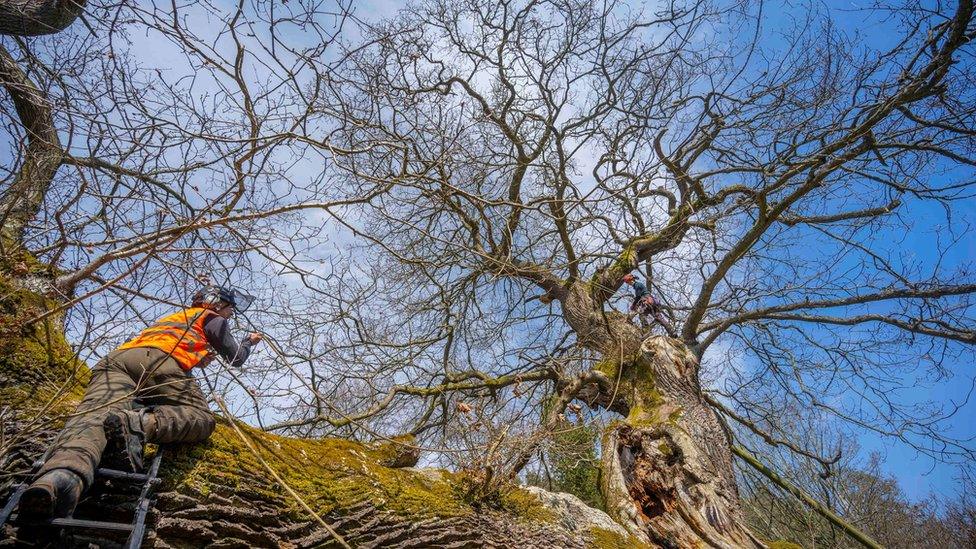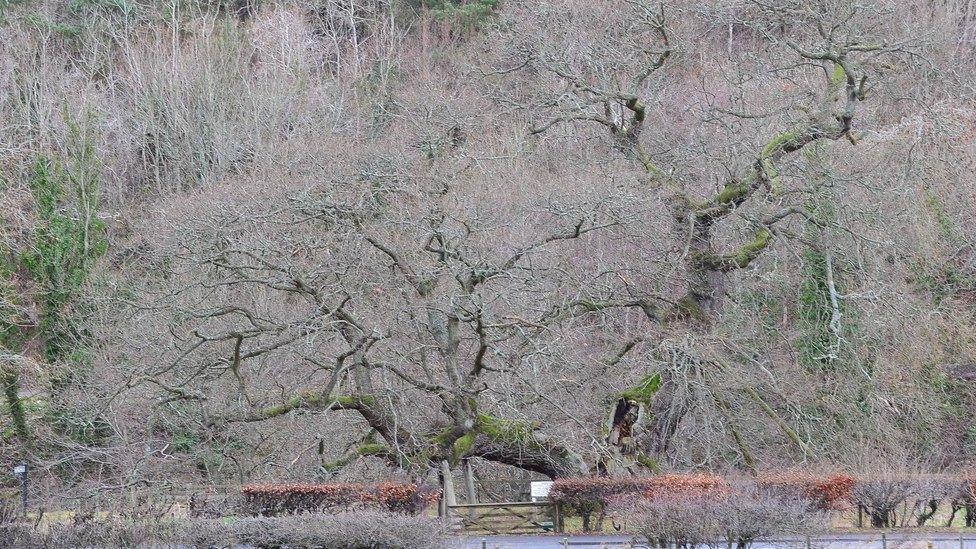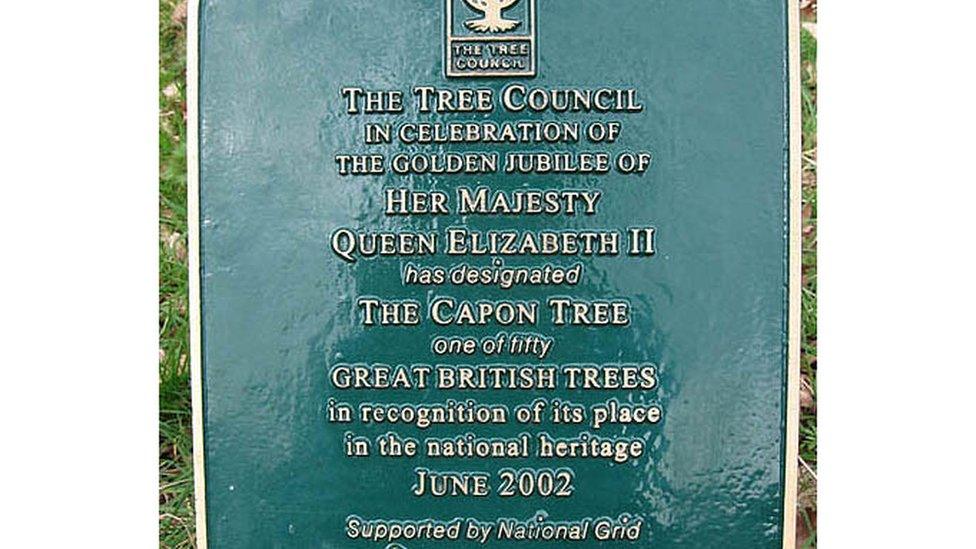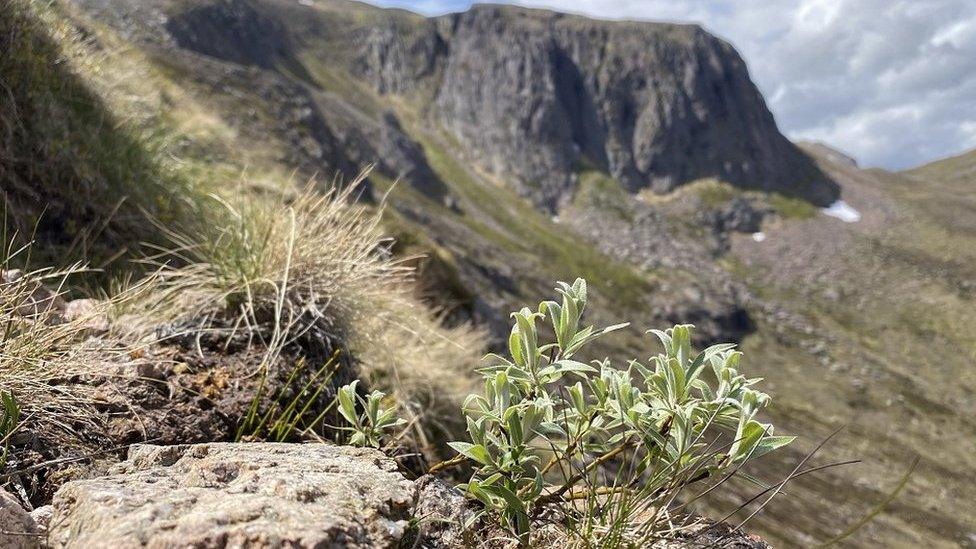Emergency repairs carried out on ancient oak tree
- Published

Work has been done to preserve the ancient tree which formed part of the Jedforest
Emergency preservation work has been carried out on one of the few trees remaining from an ancient Scottish forest.
The Capon Tree, near Jedburgh, is believed to be about 1,000 years old.
But the collapse of one of its surviving limbs has led to further props and supports being added.
Jim Steele, chair of Jedburgh Community Trust, said: "We are doing everything we can to look after the tree for future generations."
The Capon Tree is one of the few survivors of the ancient Jedforest which covered a large area of the southern borderlands.
In recent decades it has become an integral part of Jedburgh's annual summer festival.
But the ancient English oak is close to dying with only one limb now showing any life.

The Capon Tree sits around a mile south of Jedburgh
Mr Steele said: "The remaining upright limb became exposed when the other limb collapsed.
"We have just completed putting props and tie-backs on the surviving limb to give it its best chance.
"It is a tree of national importance and there are a lot of visitors who go out to visit the Capon Tree when in Jedburgh."
Jedburgh Community Trust raised £15,000 to fund the emergency work and enhance the surrounding area.
As well as the creation of a wildflower meadow beneath its branches, new benches and gates are being installed over the coming weeks.
Mr Steel added: "We are on the second phase of works which will make the visitor experience much better.
"We'll have a new meadow, picnic benches and an information board telling of the tree's history and pointing visitors to other important trees in the area."
It is believed that much of the historic Jedforest was cut down for ships during attacks by the Spanish Armada in the late 16th Century.
By that time the Capon Tree itself was already a landmark where local men would gather before mounting cross-border raids into Northumberland.

In 2002, the Capon Tree was honoured as one of Britain's 50 greatest trees
In 2002 it was included in the Tree Council's list of 50 "great British trees" to mark Queen Elizabeth II's Golden Jubilee.
Among the organisations who provided funds for the preservation work was the Fallago Environment Fund.
Chairman Gareth Baird said it was £7,000 well spent.
He added: "The Capon Tree has been part of Borders life for centuries and still plays an important role in the region's heritage.
"We're extremely pleased that these windfarm-generated funds are being used to help maintain the health of this historic tree and enhance its surroundings so that it can continue to play its important role in the lives of people from Jedburgh and beyond."
Related topics
- Published6 July 2022
